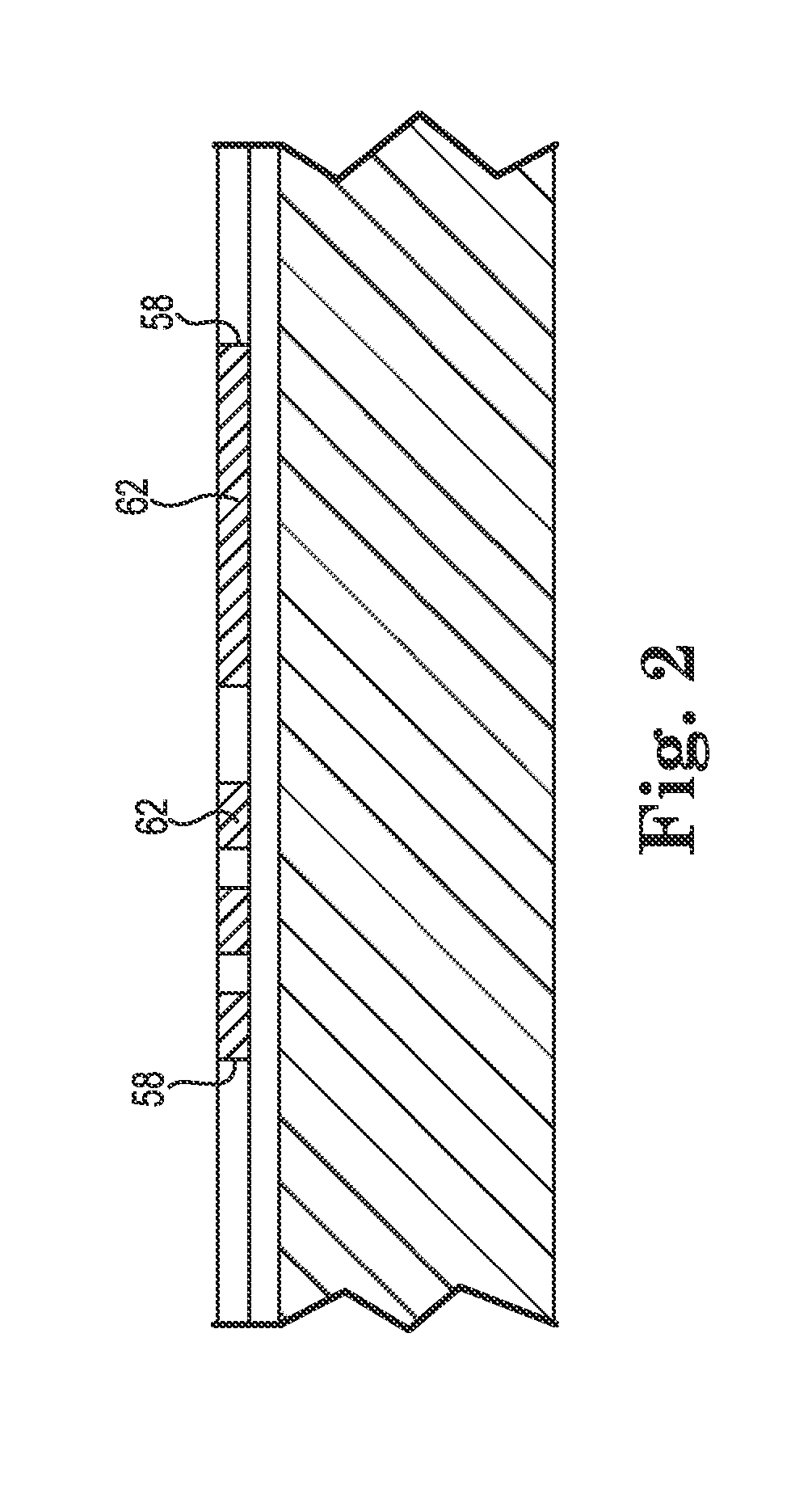Compliant printed circuit semiconductor tester interface
a tester interface and printed circuit technology, applied in the direction of individual semiconductor device testing, conductive pattern formation, instruments, etc., can solve the problems of high cost of flexible circuits compared to some rigid pcb products, limited layer count or feature registration, and high cost of tester interface circuit boards, etc., to achieve low overall cost and less lead time
- Summary
- Abstract
- Description
- Claims
- Application Information
AI Technical Summary
Benefits of technology
Problems solved by technology
Method used
Image
Examples
Embodiment Construction
[0055]FIG. 1 is a side cross-sectional view of a method for replicating a compliant printed circuit for a semiconductor tester interface using additive processes in accordance with an embodiment of the present disclosure. Substrate 50 is a platform for the fabrication process, but may also be used in the finished tester interface.
[0056]One or more dielectric layers 52, 54 are preferably printed on surface 58 of the substrate 50 to create recesses 56 corresponding to a desired circuit geometry. Alternatively, the recesses 56 can be defined by embossing, imprinting, chemical etching with a printed mask, or a variety of other techniques. A number of different materials are used as the substrate 50 including: polyester (PET), polyimide (PI), polyethylene napthalate (PEN), Polyetherimide (PEI), along with various fluropolymers (FEP) and copolymers. Polyimide films are the most prevalent due to their advantageous electrical, mechanical, chemical, and thermal properties.
[0057]As illustrate...
PUM
| Property | Measurement | Unit |
|---|---|---|
| Dielectric polarization enthalpy | aaaaa | aaaaa |
| Flexibility | aaaaa | aaaaa |
| Shape | aaaaa | aaaaa |
Abstract
Description
Claims
Application Information
 Login to View More
Login to View More - R&D
- Intellectual Property
- Life Sciences
- Materials
- Tech Scout
- Unparalleled Data Quality
- Higher Quality Content
- 60% Fewer Hallucinations
Browse by: Latest US Patents, China's latest patents, Technical Efficacy Thesaurus, Application Domain, Technology Topic, Popular Technical Reports.
© 2025 PatSnap. All rights reserved.Legal|Privacy policy|Modern Slavery Act Transparency Statement|Sitemap|About US| Contact US: help@patsnap.com



